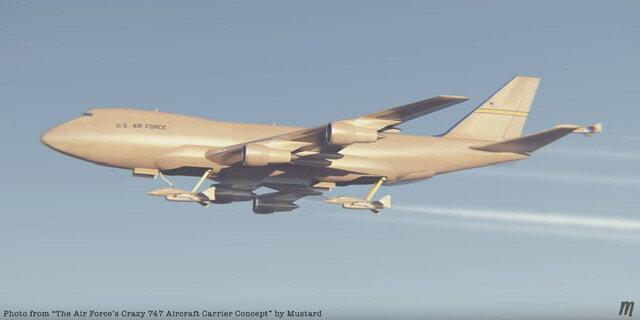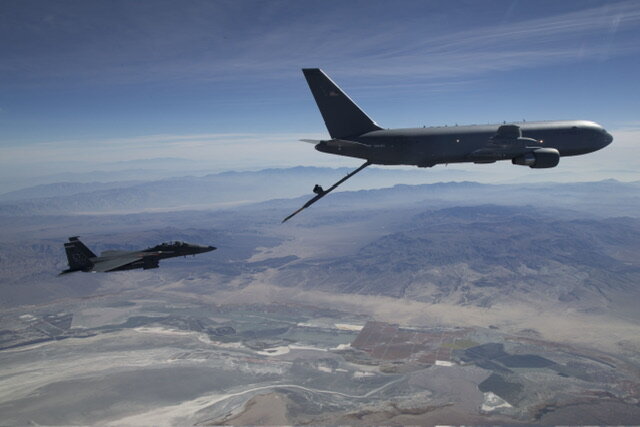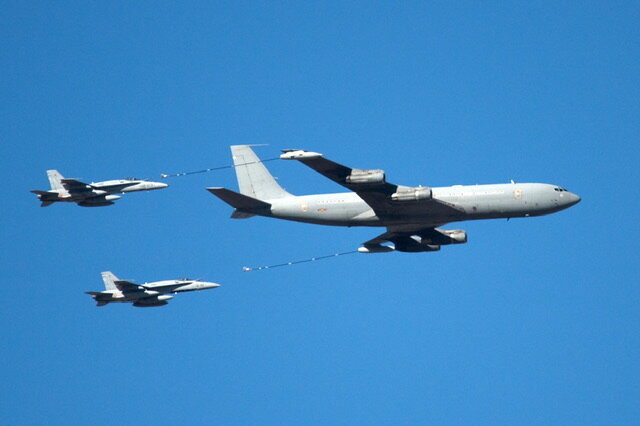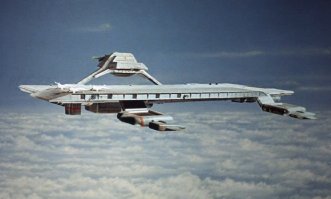You are using an out of date browser. It may not display this or other websites correctly.
You should upgrade or use an alternative browser.
You should upgrade or use an alternative browser.
Airborne aircraft carrier VS aerial tanker
- Thread starter A_Kid1234
- Start date
A_Kid1234
So I can put anything I want here?
- Joined
- 10 May 2023
- Messages
- 66
- Reaction score
- 29
your really stretching the definition of airborne aircraft carrier.
Of interest

 www.nextbigfuture.com
www.nextbigfuture.com

Could a molten salt reactor be the power source for a SHIELD helicarrier ? | NextBigFuture.com
Mark Warren performed a calculation that scaling up the F35-B’s thrust ratio (55,000 shp delivering 41,900 lb thrust) implies the Helicarrier carries
 www.nextbigfuture.com
www.nextbigfuture.com
A_Kid1234
So I can put anything I want here?
- Joined
- 10 May 2023
- Messages
- 66
- Reaction score
- 29
While
While this is interesting it’s not what this discussion is about.Of interest

Could a molten salt reactor be the power source for a SHIELD helicarrier ? | NextBigFuture.com
Mark Warren performed a calculation that scaling up the F35-B’s thrust ratio (55,000 shp delivering 41,900 lb thrust) implies the Helicarrier carrieswww.nextbigfuture.com
- Joined
- 27 December 2005
- Messages
- 16,483
- Reaction score
- 19,242
You are young and enthusiastic, but the answer is a clear "yes, aerial refuelling is better". You can generally tell this from the lack of airborne aircraft carriers.
A_Kid1234
So I can put anything I want here?
- Joined
- 10 May 2023
- Messages
- 66
- Reaction score
- 29
Thanks for the compliment, but also wouldn’t an airborne aircraft carrier be better? I mean it can service aircraft without being to far from the battlefield. you would also probably need to dock and undock fewer times.You are young and enthusiastic, but the answer is a clear "yes, aerial refuelling is better". You can generally tell this from the lack of airborne aircraft carriers.
A_Kid1234
So I can put anything I want here?
- Joined
- 10 May 2023
- Messages
- 66
- Reaction score
- 29
Another advantage I see in airborne aircraft carriers is that they can make the parasite aircraft simpler, for example, using ramjets instead of turbine jets or props, and having much smaller landing gear.
A_Random_Guy
ACCESS: Confidential
- Joined
- 24 May 2022
- Messages
- 56
- Reaction score
- 89
Think about how a conventional carrier works.Thanks for the compliment, but also wouldn’t an airborne aircraft carrier be better? I mean it can service aircraft without being to far from the battlefield. you would also probably need to dock and undock fewer times.
The purpose is to have a rapidly relocatable airbase that can conduct sustained air operations in a region. Long range strike missions can be conducted by bombers but these generally are not amenable to rapid sortie generation.
The aircraft of a CVW are going to be doing 1-2 sorties per day on average during a surge there's more limitations than just weapons that contribute to this. Pilot fatigue, briefing and debriefing, and maintainence are all critical steps that must be undertaken to generate a sortie.
How long can your airborne aircraft carrier stay on station? A day? 12 hours? Unless you have something truly insane like a nuclear powered aircraft you're going to have a very finite mission time unless you're going to have a constant stream of tankers in which case you've just created a whole new set of problems.
What missions could an aircraft carrier with that time on station do? Strike, close air support? At that point you're better off using a bomber since they can perform those missions and they don't have to waste space and weight on parasite aircraft, just munitions. Combat air patrols? Again if you really need a super long duration fighter/interceptor would it not be better to just convert a transport/bomber. There were concepts for a P-3 Orion derived interceptor armed with Eagle AAMs and the concept has surfaced from time to time with C-130s armed with Phoenix to a modified Tu-22M acting as an interceptor. Additionally, munitions expenditure isn't very high during fighter sweeps. Refueling is almost always the key limitation, not weapons, so a tanker that services a couple fighters is just a more efficient use of resources.
This is called a cruise missile.Another advantage I see in airborne aircraft carriers is that they can make the parasite aircraft simpler, for example, using ramjets instead of turbine jets or props, and having much smaller landing gear.
When considering these topics its important to think of the actual mission it performs and the alternatives. The substitute for an airborne aircraft carrier isn't always a tanker, sometimes its a bomber or an ISR/AEW&C aircraft. Consider the costs. An airborne aircraft carrier likely needs specialized aircraft to use it, specialized aircraft that may be useless without it (unlike conventional carrier-borne aircraft which can be deployed to land bases).
The most realistic proposal is probably the Gremlins program which involves the launch and recovery of what amounts to a loitering munition by a transport aircraft. This works because the vehicle is only one-step removed from a cruise missile, not being a manned aircraft and is thus expendable meaning it has some potential benefit in high-risk environments over just using a bomber or other strike aircraft.
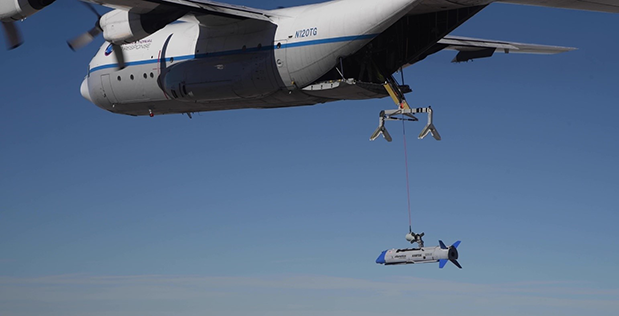
A_Kid1234
So I can put anything I want here?
- Joined
- 10 May 2023
- Messages
- 66
- Reaction score
- 29
Well the idea would be to have a bomber carry its own escort fighters and/or strike drones.Think about how a conventional carrier works.
The purpose is to have a rapidly relocatable airbase that can conduct sustained air operations in a region. Long range strike missions can be conducted by bombers but these generally are not amenable to rapid sortie generation.
The aircraft of a CVW are going to be doing 1-2 sorties per day on average during a surge there's more limitations than just weapons that contribute to this. Pilot fatigue, briefing and debriefing, and maintainence are all critical steps that must be undertaken to generate a sortie.
How long can your airborne aircraft carrier stay on station? A day? 12 hours? Unless you have something truly insane like a nuclear powered aircraft you're going to have a very finite mission time unless you're going to have a constant stream of tankers in which case you've just created a whole new set of problems.
What missions could an aircraft carrier with that time on station do? Strike, close air support? At that point you're better off using a bomber since they can perform those missions and they don't have to waste space and weight on parasite aircraft, just munitions. Combat air patrols? Again if you really need a super long duration fighter/interceptor would it not be better to just convert a transport/bomber. There were concepts for a P-3 Orion derived interceptor armed with Eagle AAMs and the concept has surfaced from time to time with C-130s armed with Phoenix to a modified Tu-22M acting as an interceptor. Additionally, munitions expenditure isn't very high during fighter sweeps. Refueling is almost always the key limitation, not weapons, so a tanker that services a couple fighters is just a more efficient use of resources.
This is called a cruise missile.
When considering these topics its important to think of the actual mission it performs and the alternatives. The substitute for an airborne aircraft carrier isn't always a tanker, sometimes its a bomber or an ISR/AEW&C aircraft. Consider the costs. An airborne aircraft carrier likely needs specialized aircraft to use it, specialized aircraft that may be useless without it (unlike conventional carrier-borne aircraft which can be deployed to land bases).
The most realistic proposal is probably the Gremlins program which involves the launch and recovery of what amounts to a loitering munition by a transport aircraft. This works because the vehicle is only one-step removed from a cruise missile, not being a manned aircraft and is thus expendable meaning it has some potential benefit in high-risk environments over just using a bomber or other strike aircraft.
View attachment 725245
A_Random_Guy
ACCESS: Confidential
- Joined
- 24 May 2022
- Messages
- 56
- Reaction score
- 89
The penetration mission is largely obselete, except for stealth aircraft which having a fighter around would likely compromise their stealth. If you really need defense, put an air-to-air radar or two on the bomber and strap some AMRAAMS to it. You'll be giving up far less payload space to do that than have a modern "Goblin" fighter.Well the idea would be to have a bomber carry its own escort fighters and/or strike drones.
It's better to be undetected and the only way to cue such a fighter to counter an inbound interceptor would be a powerful radar that is going to light up every threat-board on earth.
Even better, don't perform a penetration mission and use long range air launched cruise missiles to hit a target, entirely eliminating the need for strike drones and for escort fighters and the complex servicing equipment for them.
A_Kid1234
So I can put anything I want here?
- Joined
- 10 May 2023
- Messages
- 66
- Reaction score
- 29
I’ve never been a huge fan of stealth, I’ve always preferred low observable technology combined with advanced countermeasures.The penetration mission is largely obselete, except for stealth aircraft which having a fighter around would likely compromise their stealth. If you really need defense, put an air-to-air radar or two on the bomber and strap some AMRAAMS to it. You'll be giving up far less payload space to do that than have a modern "Goblin" fighter.
It's better to be undetected and the only way to cue such a fighter to counter an inbound interceptor would be a powerful radar that is going to light up every threat-board on earth.
Even better, don't perform a penetration mission and use long range air launched cruise missiles to hit a target, entirely eliminating the need for strike drones and for escort fighters and the complex servicing equipment for them.
A_Random_Guy
ACCESS: Confidential
- Joined
- 24 May 2022
- Messages
- 56
- Reaction score
- 89
What do you think stealth is? It's always been like this. LO inherently benefits from (offboard) ECM more than conventional aircraft.I’ve never been a huge fan of stealth, I’ve always preferred low observable technology combined with advanced countermeasures.
A_Kid1234
So I can put anything I want here?
- Joined
- 10 May 2023
- Messages
- 66
- Reaction score
- 29
Stealth is, from what I’ve read, the ability to become nearly invisible, low observable on the other hand, reduces your RCS, but not to the extent of stealth technology.What do you think stealth is? It's always been like this. LO inherently benefits from (offboard) ECM more than conventional aircraft.
Colonial-Marine
UAVs are now friend, drones are the real enemy.
- Joined
- 5 October 2009
- Messages
- 1,198
- Reaction score
- 714
There are several topics on this forum relating to past attempts at airborne aircraft carriers. The USAF extensively tested the concept of "parasite fighters" carried by modified bombers that would enable a force of bombers to better protect itself. One of the results was the XF-85 Goblin, an ugly barrel-shaped little fighter that was intended to fit inside of modified B-36s. Because of these size restraints its performance was very much compromised. I have little doubt that the contemporary F-86 Sabre or some of the USAF's earlier straight-wing jet fighters could have bested it in air-combat with ease.Does anyone know of any other airborne aircraft carrier concepts?
It was also a great challenge for the pilot to hook back up with the bomber after launch. It took a real expert pilot to do this and I'm sure McDonnell test pilot Edwin Schoch had the sort of experience to qualify for that label. Yet even he failed most attempts at reconnecting to the mothership aircraft.
McDonnell proposed some improved designs but at that point the USAF had lost interest in the concept and they were probably right that it wasn't going to be effective with the technology of the day. Aerial refueling provided much more practical options. There were a few other similar USAF programs like fighters connected to the bomber via the wingtip, and FICON which allowed a bomber to carry an under-slung fighter-bomber that would be used to actually deliver the nuclear weapon.
With the much greater automation that can be achieved now and the increased utility of UAVs, you could probably do some impressive things today. Like having a large aircraft to carry something like the Boeing MQ-28. These could serve as an escort or strike package that could be useful for specific scenarios. But in the past I don't think the concept was ever very viable.
Now if you want something like a massive sci-fi flying aircraft carrier out of Ace Combat, that would take some revolutionary developments in aircraft propulsion and power sources. If you were crazy enough and had the resources of an industrial superpower maybe you could make a massive fixed wing aircraft carrier powered by an airborne nuclear reactor, but a lot of people won't be very friendly to the prospect of that flying around.
Last edited:
- Joined
- 27 December 2005
- Messages
- 16,483
- Reaction score
- 19,242
Stealth is often called VLO (very low observables) which is regarded as a subcategory of the wider LO (low observables) domain. The latest stealth aircraft have been called ELO (extremely low observables).Stealth is, from what I’ve read, the ability to become nearly invisible, low observable on the other hand, reduces your RCS, but not to the extent of stealth technology.
So the overall technology is LO. "Stealth" is generally regarded as using LO technology to achieve very low or extremely low observables.
A_Random_Guy
ACCESS: Confidential
- Joined
- 24 May 2022
- Messages
- 56
- Reaction score
- 89
LO and Stealth are synonymous though LO is the far more technical (and more precise) term. There is no "becoming nearly invisible" there is only signature reduction which reduces probability of detection and aquisition.Stealth is, from what I’ve read, the ability to become nearly invisible, low observable on the other hand, reduces your RCS, but not to the extent of stealth technology.
Imagine someone talking across the room from you. With no-one else in there it's easy to listen to them. Now if there's a bunch of other people at a party, good luck picking out their words. Now imagine they're alone and whispering. Now even background noise like birds chirping outside drowns them out and it's made even worse when we get back to the party. You can hear them in both scenarios, they're never perfectly silent, its just you don't have the processing capabilty to separate that low signature from everything else. That's how Stealth works.
LO technology also applies to more than RCS, low IR emissivity measures and noise dampening also contribute to LO. Stealth/LO is not a set grade. They vary betwen contexts both compared to other aircraft and between different sensors.
A_Kid1234
So I can put anything I want here?
- Joined
- 10 May 2023
- Messages
- 66
- Reaction score
- 29
Ah, I think I get it nowLO and Stealth are synonymous though LO is the far more technical (and more precise) term. There is no "becoming nearly invisible" there is only signature reduction which reduces probability of detection and aquisition.
Imagine someone talking across the room from you. With no-one else in there it's easy to listen to them. Now if there's a bunch of other people at a party, good luck picking out their words. Now imagine they're alone and whispering. Now even background noise like birds chirping outside drowns them out and it's made even worse when we get back to the party. You can hear them in both scenarios, they're never perfectly silent, its just you don't have the processing capabilty to separate that low signature from everything else. That's how Stealth works.
LO technology also applies to more than RCS, low IR emissivity measures and noise dampening also contribute to LO. Stealth/LO is not a set grade. They vary betwen contexts both compared to other aircraft and between different sensors.
The original flying aircraft carriers,the rigid airships Akron and MaconDoes anyone know of any other airborne aircraft carrier concepts?
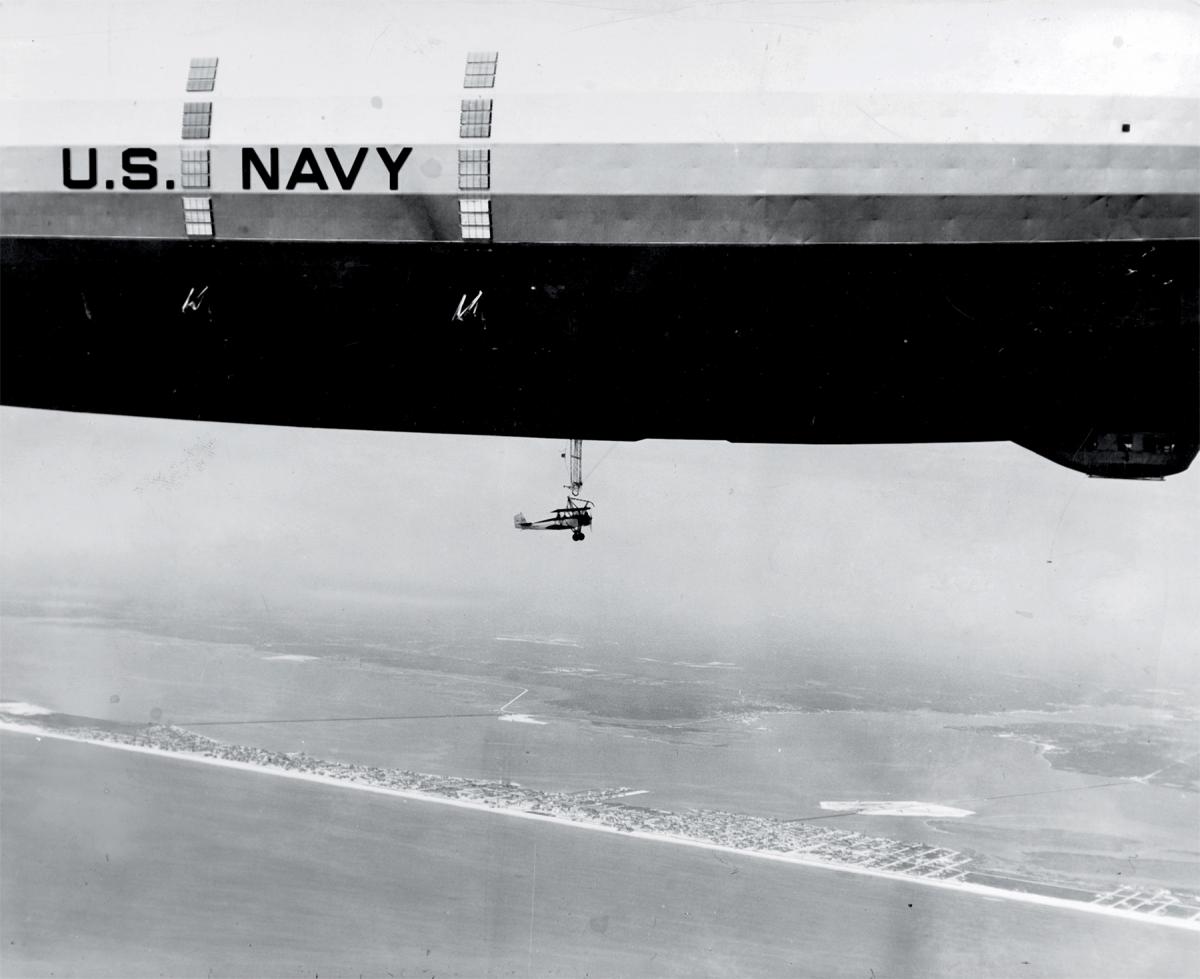
A_Kid1234
So I can put anything I want here?
- Joined
- 10 May 2023
- Messages
- 66
- Reaction score
- 29
Fair pointTechnically speaking, cruise missiles are aircraft, therefore any cruise-missile carrier is an aircraft carrier...
A_Kid1234
So I can put anything I want here?
- Joined
- 10 May 2023
- Messages
- 66
- Reaction score
- 29
Didn’t they both crash?The original flying aircraft carriers,the rigid airships Akron and Macon

A_Kid1234
So I can put anything I want here?
- Joined
- 10 May 2023
- Messages
- 66
- Reaction score
- 29
And you can’t change my mind on that.And suicide drones are just surveillance cruise missile.
A_Kid1234
So I can put anything I want here?
- Joined
- 10 May 2023
- Messages
- 66
- Reaction score
- 29
the only way I really see airborne aircraft carriers working in fixed wing aircraft is either, the bomb bay is big enough to store the aircraft, or having the wings be thick enough that, via some kind of airtight connection, the crawls out of his aircraft, through the wing, and into the fuselage. In airships, however, with modern jet technology, the aircraft would need to be able to essentially hover, and a boom or arm or something grabs the aircraft and moves it into the hangar. The other option is that the airship is fast enough and the jet is slow enough that they can match speeds, although some kind of boom or are would likely still be necessary for the retrieval of the aircraft.
Similar threads
-
DARPA uses a global hawk to aerial refuel Scaled Composites Proteus?
- Started by bobbymike
- Replies: 13
-
Are there AEW&C and airborne refueling versions of the Airbus A-400M planned
- Started by silkmonkey
- Replies: 5
-
-
-
XQ-11 / Radioplane RP-91 / F-108 Airborne Target
- Started by Andreas Parsch
- Replies: 18


